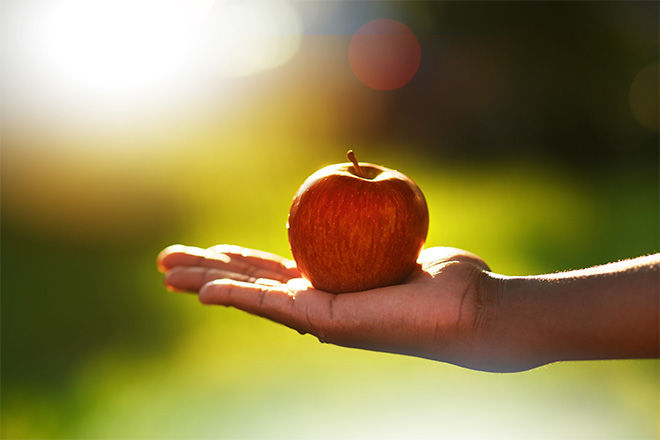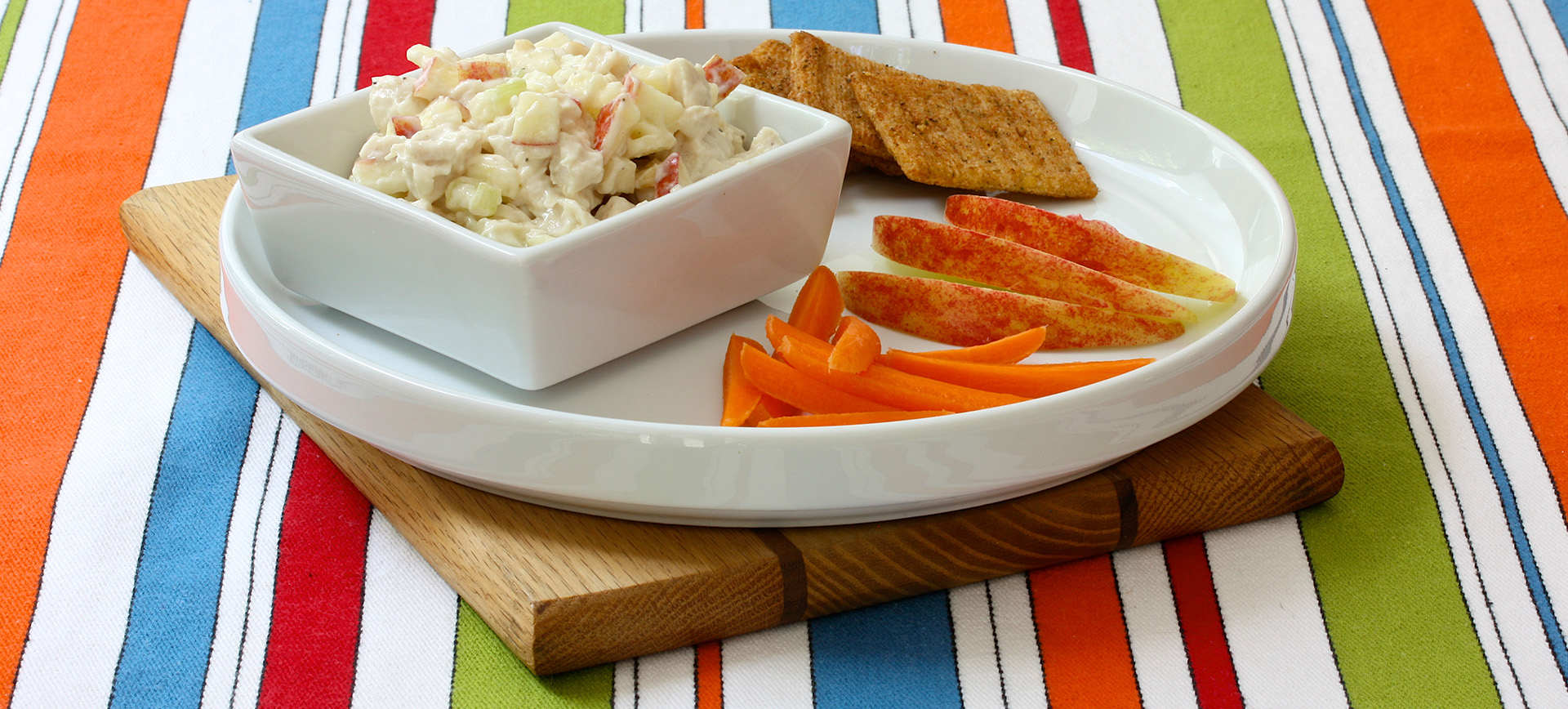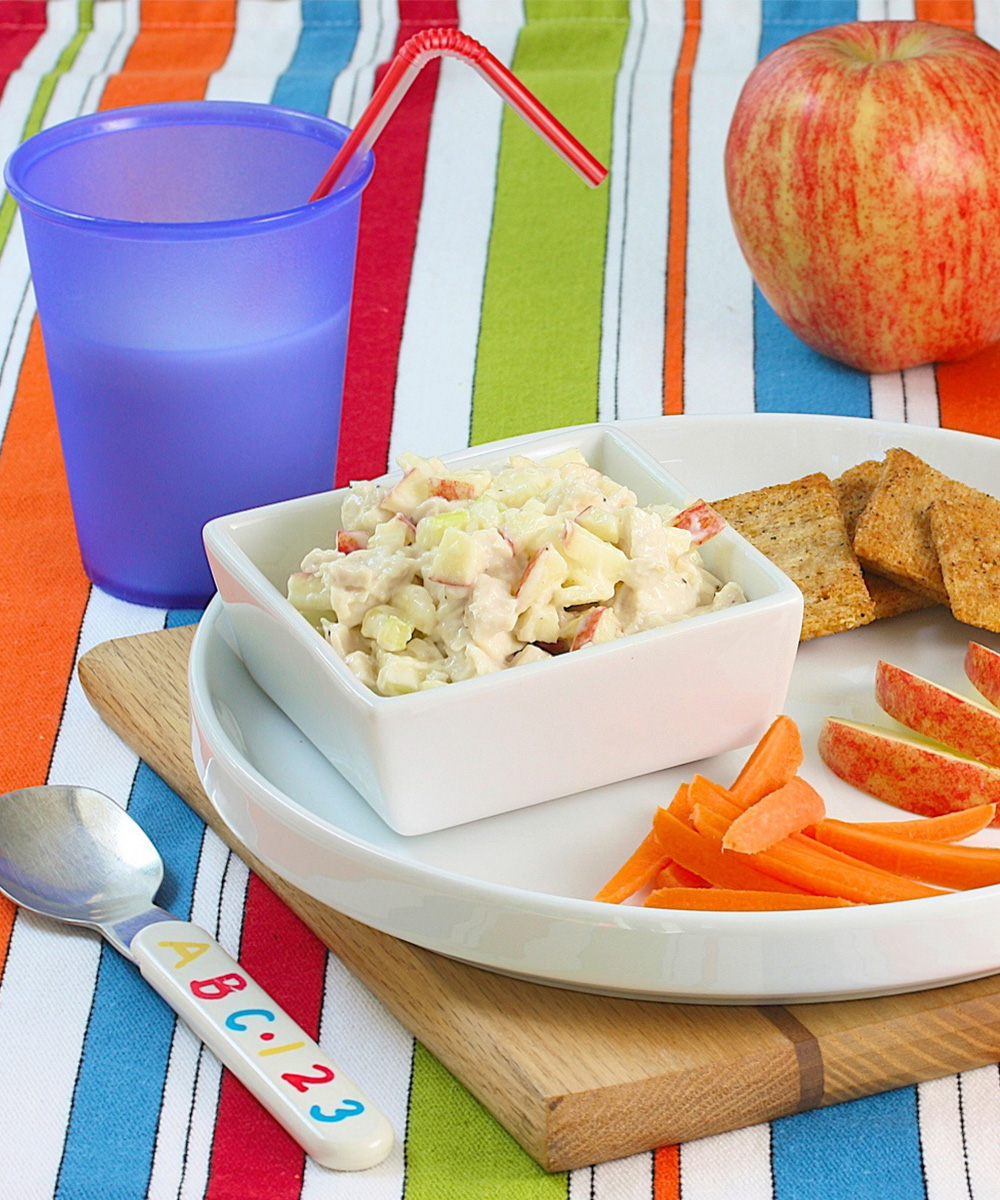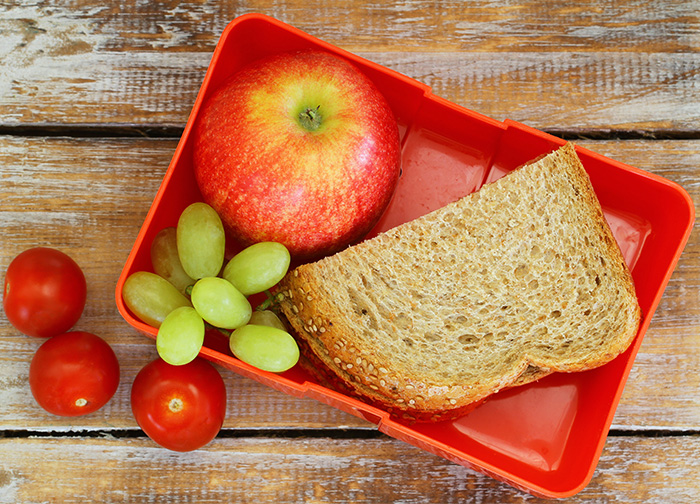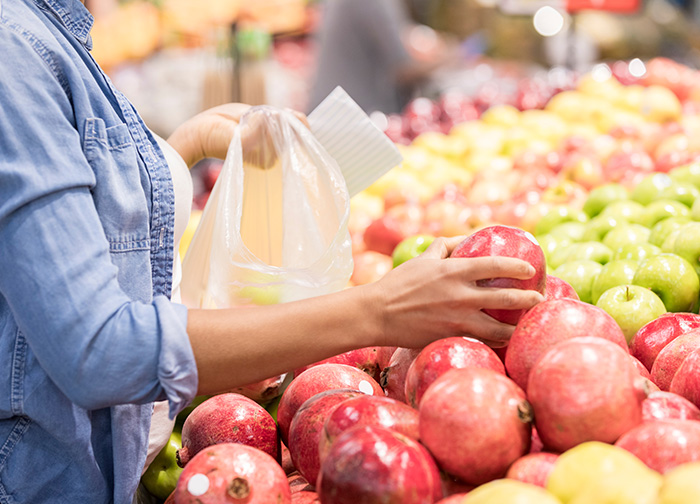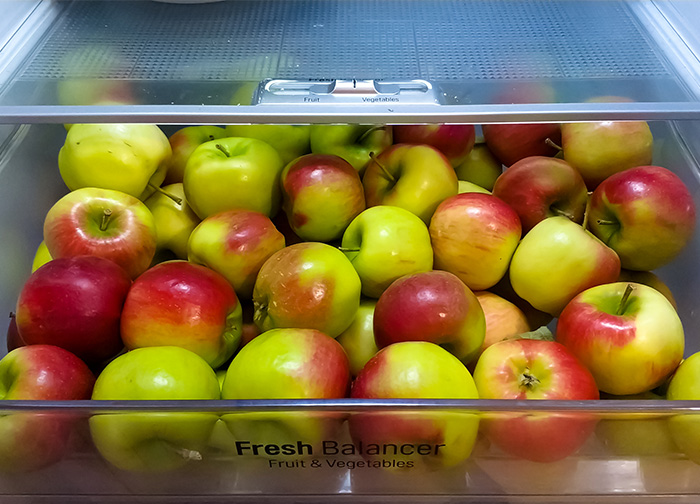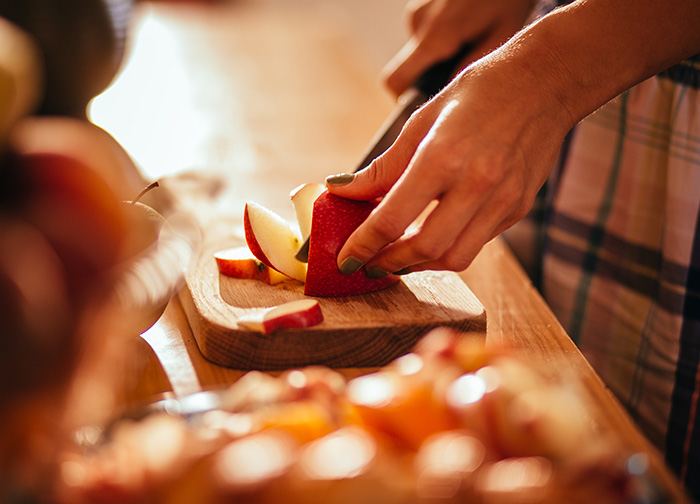Juicy, crunchy, sour, or sweet, apples in autumn are the perfect family treat! Whether you bake them in a pie, slice them for a lunch box snack, or use them for our easy chicken salad, apples pack great nutrition into every delicious bite. One medium apple has just 95 calories and 4 grams of filling fiber, and now that they’re in season, their flavor is at its peak.
Chicken salad is a family favorite and so are crisp, crunchy apples, so we combine the two for this autumn-inspired recipe. Serve it with whole grain crackers, between whole wheat-bread, tucked into a pita pocket, or on top of a green salad.
